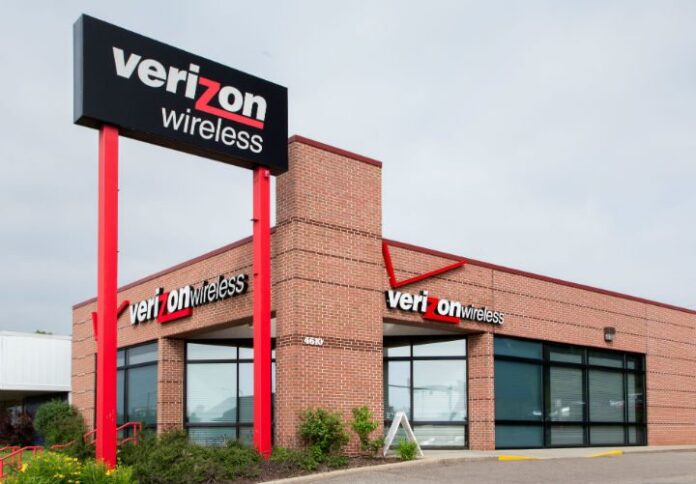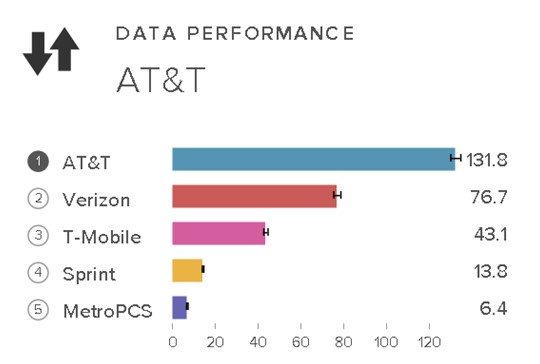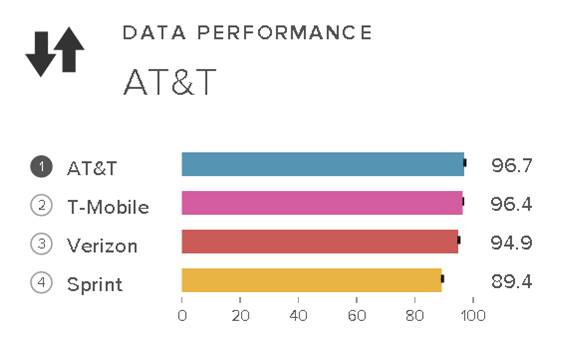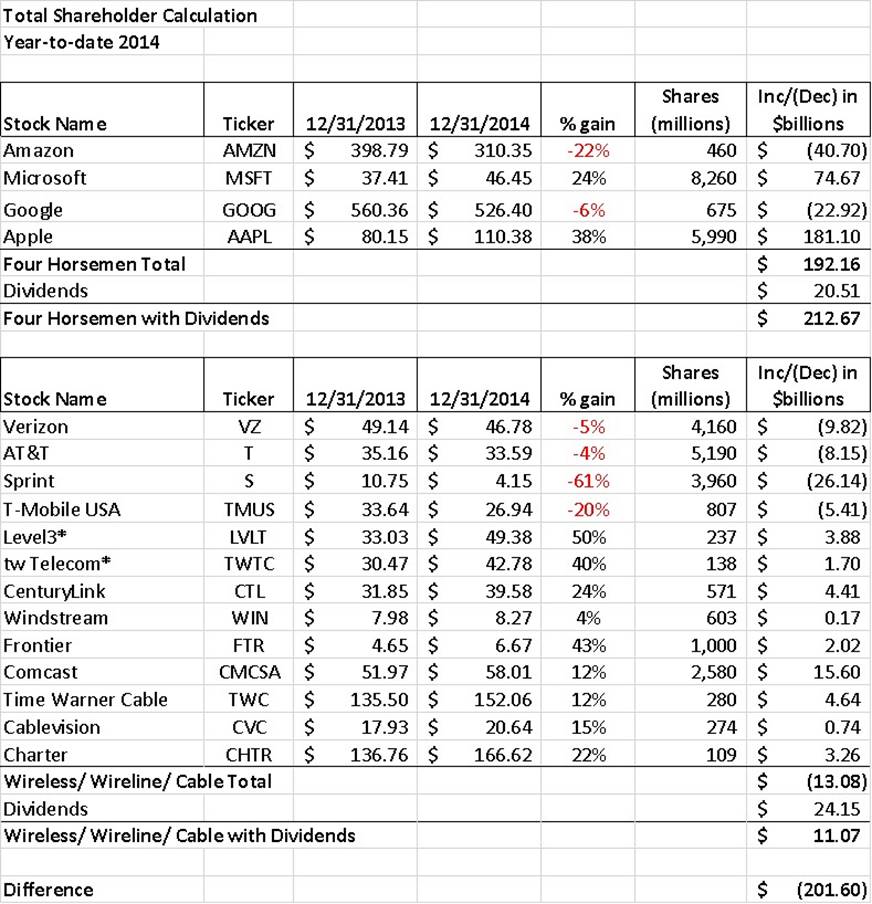Verizon Communications reported earnings last week. Without going through every detail of their 1.99 million wireless retail postpaid net additions – 1.4 million of which were tablets – let’s focus on two of the most important figures: postpaid churn and broadband (FiOS + DSL) net additions. Next week, we’ll talk about Verizon’s cost of service approach vs. its peers (AT&T will make a nice comparison).
Postpaid monthly churn was 1.14% on an average quarterly postpaid retail customer base of 101.09 million customers, vs. .96% on an average of 95.97 million customers in the fourth quarter of 2013. This results in monthly customer churn levels of 1.152 million in Q4 2014 vs. 960,000 customers in Q4 2013, and 993,000 in the third quarter of 2014.
The 231,000 customer increase in monthly churn over Q4 2013 translates into a 700,000 customer increase in takeaway opportunities across the quarter for AT&T Mobility, T-Mobile US and Sprint. While all 700,000 customers did not go to T-Mobile US, many did, as customers looking to trade in their old iPhone 5 and Samsung Galaxy S4 models did so while changing carriers. Despite the increase in churn, however, Verizon Wireless still posted 600,000 postpaid phone net additions and grew total accounts by 181,000.
Those who analyze the industry can become obsessed with small deviations from expectations. Frankly, a .1% change in Verizon Wireless’ churn vs. expectations results in 300,000 more takeaway opportunities for their competitors. As we discussed last week, higher churn will continue to persist in 2015 as customers who are less happy with their Apple iPhone 5 and Samsung Galaxy S4 smartphones look to upgrade to the latest versions.
Verizon’s approach in the coming year was summarized on the earnings conference call by CFO Fran Shammo:
“… At a 1.14% churn rate, you should take that as we did not go to places where we did not financially want to go to save a customer. And there’s going to be certain customers who leave us for price and we are just not going to compete with that because it doesn’t make financial sense for us to do that … with the competition and some of the pricing that’s out there, you should think that we are going to have a higher churn rate because some customers we are just not going to financially keep.”
As discussed in the preview last week, Verizon did everything they could to serve the highest value customers, and the rest – well, good luck.
What are customers leaving for? Below are measures of the Boston – the heart of Verizon Wireless – network performance from our friends at RootMetrics:
The first chart outlines the data performance in Boston in the fall of 2012, while the second shows the performance in the second half of 2014. While many will take issue with the preciseness of each measure, there should be no question about the direction: By the end of 2014, in the eyes of some consumers, the striking difference between Verizon Wireless, AT&T Mobility and T-Mobile US is not apparent. Data-seeking individual smartphone customers who want 3 gigabytes per month for $60 on T-Mobile US might not see the value of paying $85 for a similar service. Look at the RootMetrics data performance in Boston, then Massachusetts, then nationally. The trend is undeniable – data performance differences are minimal in many major U.S. markets.
Verizon Wireless has a “highest common denominator” problem. It needs to design the overall network to be able to accommodate the consistency expectations of a legacy base of balanced voice+text+data smartphone users with the emerging expectations of a data-only, speed-focused, buffered smartphone+tablet world.
This is why the upcoming launch of (live) broadcast data represents an enormous opportunity to demonstrate Verizon Wireless’ competitive advantage – being able to have a clearer voice call over an LTE network is not enough – watching the National Football League (or National Hockey League or Major League Baseball) must be different.
This is not to take away from a good Q4, but there are chinks in the armor and the iPhone 5 and Galaxy S4 upgrade cycles do not bode well for Verizon Wireless. Product differentiation, both breadth and quality, can make a huge difference.
Verizon broadband – have we reached the top?
Little attention is paid to Verizon’s broadband performance – with data penetration of homes now exceeding 40%, and nearly 60% of FiOS Internet customers on services in excess of 50 Mbps, many analysts think that Verizon’s market opportunity has peaked.
Not so fast (pun intended), is Verizon’s response. In December, the company introduced the Quantum Gateway, a router that brings FiOS services into the modern era for $10 per month or $199 for a one-time purchase. It’s good to see Verizon leading with faster Wi-Fi speeds – the Quantum Gateway has dual-band capabilities with 800 Mbps maximum download speeds – and setting up guest access is a “nice to have” for homes where gaming friends might need some restrictions. But routers come and go, and a similar cable modem package, see here for a comparable Zoom modem offering from WalMart.com on cable’s DOCSIS 3.0 standard, costs 12% less.
Having a modem that satisfies the needs of the majority of FiOS users is table stakes and not a differentiator. However, Verizon hinted at something else in their earnings conference call:
“We have a strong commitment to customer service and have implemented several new frontline tools that are improving efficiency and increasing customer satisfaction. While we benchmark well against the competition, we have more work to do in 2015 to take our performance to the next level.”
A strong modem offering, 50 Mbps speeds and a superior customer service experience, which comes not only with fiber-based technology but also the merging of wireless and wireline service organizations, makes things get interesting. Verizon is going after the heart of the problem – predicting when things could go wrong and being preemptive with solutions to improve the customer experience.
The mere thought that Verizon could make customer service a FiOS differentiator is a stretch. However, the ACSI Benchmark for Internet service providers has them ranked at the top for the past two years (see here for full rankings), and the “Good, Bad, Ugly” reviews from Dslreports.com currently has FiOS rated highest among their peers (see here for latest report).
Bottom line: Verizon had a great, but not a record-breaking quarter. They are moving into product and service as differentiators, but, as we will see next week, are doing so with market-leading low-cost leadership. Competitive network architectures pose the greatest threat as data-centric networks meet emerging customer needs for less overall capital than Verizon’s current structure. Continued high incremental churn will be offset by growing average revenue per user within their large and growing tablet base.
Value tracker results for 2014
Many have inquired over the past weeks about 2014’s Value Tracker. Usually, we release these results the first full week of the new year, but several hot topics – namely the upcoming open Internet/net neutrality rulings – prevented the complete release of the findings. The attached table shows the final value creation results from 2014.
Not surprisingly, the “Four Horsemen” came out on top again, creating slightly more than $201 billion in increased market value than their telecom and Internet service provider peers. This is in addition to the $219 billion advantage in 2014 and $58 billion in 2013. The value created over the past three years exceeds the total equity market capitalization of AT&T and Verizon (gulp!). If the current trend continues, the four-year gap will equal all of the equity value of AT&T, Verizon, Sprint, T-Mobile US and the combined Comcast/Time Warner Cable. And the figures we have been tracking exclude Facebook and Netflix.
Some other interesting statistics to note:
· Last year, the equity market value of Sprint decreased by $26 billion, more than AT&T, Verizon and T-Mobile US combined.
· None of the wireless carriers enjoyed equity market capitalization gains in 2014.
· Level3 was the big winner on a percentage basis (up 50% annually), even with the inclusion of their stock-mostly merger with TW Telecom.
· Despite the midyear enthusiasm for Windstream’s real-estate investment trust structure, its equity market gain was a mere 4%. In contrast, Frontier and CenturyLink were up 43% and 24%, respectively.
· Microsoft’s equity rose 24% in 2014, a sharp contrast to single-digit gains/losses of the past decade.
· Missing from the “Four Horsemen” is Facebook, which added $65.2 billion in market capitalization in 2014.
The combined equity market value of Verizon, AT&T, Sprint and T-Mobile US is approximately $407 billion – even with debt, they would be hard-pressed to break $650 billion. Compare that to the combined equity market value of Google, Apple, Amazon.com and Microsoft, which is over $1.5 trillion, and with Facebook, $1.7 trillion. Five years ago, they were nearly equally sized. Something to think about as we discuss who should benefit from the open Internet and increased government regulation.
Jim Patterson is CEO of Patterson Advisory Group, a tactical consulting and advisory services firm dedicated to the telecommunications industry. Previously, he was EVP – business development for Infotel Broadband Services Ltd., the 4G service provider for Reliance Industries Ltd. Patterson also co-founded Mobile Symmetry, an identity-focused applications platform for wireless broadband carriers that was acquired by Infotel in 2011. Prior to Mobile Symmetry, Patterson was president – wholesale services for Sprint and has a career that spans over 20 years in telecom and technology. Patterson welcomes your comments at jim@pattersonadvice.com and you can follow him on Twitter @pattersonadvice. Also, check out more columns and insight from Jim Patterson at mysundaybrief.com.
Editor’s Note: Welcome to our weekly Reality Check column where C-level executives and advisory firms from across the mobile industry share unique insights and experiences.






